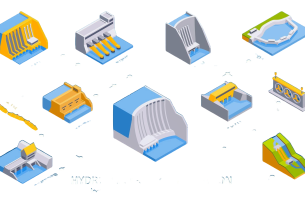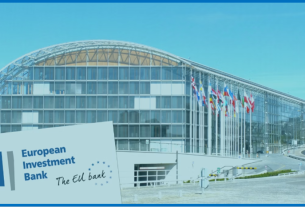By Solomon C. Hedd-Williams BSc, MSc., Senior Agronomist (soil and crop specialist )
Achieving rice self-sufficiency for sustainability in Liberia is an enormous task, but it is doable with adequate financial support, the necessary infrastructures, and other support mechanisms to embark on such a very sustainable task. A crucial factor in this endeavor is a determined leadership and political will as well as concerted efforts from all stakeholders.
The consumption and production of local rice remain the crucial strategies to enhance rice self-sufficiency for sustainability, stimulate economic growth and thus improve the livelihood of rice farmers. Another crucial way of attaining this, is through the enactment of stringent government policies that prioritize the value added to the local rice. Such a policy will favor boosting production and productivity thereby making it available, accessible, and affordable to the entire population.
Liberia has for many years imported most of the rice it consumes. This makes us as a people, highly vulnerable to price volatility of the international markets and is one of the reasons, rice self-sufficiency for sustainability must be a priority of our government agriculture policy. To achieve this goal, we must increase land under cultivation in lowland both rainfed and irrigated.
According to the West African Rice Development Association report, the annual consumption of rice in Liberia is 133 kg per year, which is amongst the highest in Sub-Saharan Africa. Our smallholder farmers are our traditional engine of production on both upland and lowlands. 570,000 metric tons of milled rice is the required consumption need of our population per annum. Considering this, Liberia has not been able to produce enough rice to meet its local consumption demand for an exceptionally long time . Our imports of rice continue to be the alternative to avail rice to feed our growing population of approximately 5.3 million people and counting.
Supporting rice production programs is the only solution to pull the country out of any rice crisis, and to promote self-sufficiency in rice production and making it sustainable.
Rice self-sufficiency is exceptionally doable in Liberia, considering our diverse agroecological zones, soil suitability, wet and dry climatic conditions, and our rich biodiversity.
Liberia should not be spending over $280 million yearly importing rice because our favorable climate and soils are highly suitable for the rice crop. We have a total landmass 0f 4.9 million hectares and 47% is arable land most of which is still unutilized.
In our efforts to achieve self-sufficiency in rice production, our government must show interest in the 2003 Maputo Declaration by allocating and surpassing the recommended 10% of its annual budget to at least 15% to achieve some level of sustainable development in the agriculture sector.
Our government should begin to strategize and create policies that support investment in smallholder farmers themselves rather than private or foreign investment.
To commence this achievable goal, our government needs to assess the estimate of rice crop yield in different ecological zones in Liberia and highlight the potential to achieve rice self-sufficiency. We certainly need to map out the major rice-producing areas in Liberia and focus our attention on the organization of the smallholder farming community as the major engine of rice cultivation.
As a nation, we need a national rice development policy, a policy that focuses and supports local rice production, government rice reserves creation, and rice import. The government rice reserve should be one of the main policy indicators. In achieving rice self-sufficiency for sustainability, the ability of local rice production to be one to supply the availability of national rice reserve without bringing it in from the outside. We must rely on local production in supplying the availability of our national rice reserve in the future. A rice development policy that high lights its attention on the expansion and development of our lowland rainfed and irrigated ecologies
As an agronomist that specializes in soil science for crop production, with emphasis on swamp rice cultivation, I am humble to proffer these suggestions, as a workable solution that could add to a road map for achieving rice self-sufficiency for sustainability in Liberia
They are as follows.
- Our government needs to commit at least 15% of its annual budget to the agriculture sector to promote rice production and intensification in Liberia.
- A major and pragmatic government policy change, “Eat Liberia Rice “ a policy in the form of a campaign that will sensitize local consumers on the economic and nutritional importance of consuming local products and the production of suitable rice varieties for local consumption.
- We should be cognizant by now that our prolonged policy of government supplying all agricultural inputs to farmers has not produced any sustainable effect and should be abandoned. We must transform our policy and support to farmers by creating a new model and pragmatic input supply adapted to the local context.
- There is a need to review the rice subsector policy and do some innovative revision that is in concert with today’s reality of climate change. A revised National Rice Development Policy with a focus on domestic rice production, government stock reserves, and rice import. The issue of diverting government subsidy from import to production is durable but needs a more balanced and pragmatic approach where production and imports can benefit collaboratively to eventually increase local production and reserve with a gradual minimization of the subsidy extended to imports.
- A revised National Rice Policy that addresses critical issues of technological upgrading , skill development, productivity, markets, agro-business, and farming opportunities
- The interest of the farmers must come first in supporting domestic production of rice and the government’s purchase of rice from farmers, especially during harvest as a means of increasing its stock reserve. Eventually, the importation of rice will be looked upon as a temporary and transitional solution.
- Expansion of rice production can be additionally achieved through the rehabilitation of all abandoned upland and lowland farm areas, especially the enormous number of lowland areas that have not been exploited.
- Rice farms development in all our counties utilizing short-duration varieties seeds as compared to the long duration with the utilization of climate-smart high-yielding hybrid seeds to obtain two or three harvests a year. We should at least invest five hundred hectares of land per county for rice development.
- Let us bring back the model of the various counties’ Agriculture Development Projects. Involving the local government to be an active part of agriculture development in the country. The Ministry of Agriculture ( MOA ) as the implementing arm to provide technical assistance through extension, monitoring and evaluation. This will be a total involvement expedition having the local government as part of the development process and not leaving it up to the MOA alone. The Superintendents, Senators, and Representatives as part of the agriculture development process.
- Increase investment in our agriculture infrastructures rehabilitation including irrigation, feeder roads, warehouses, storage, and processing facilities
- Capacity building ,especially our institutional capacity. Training farmers in rice farming techniques, on farm technology development and dissemination, the recruitment and training of subject matter specialists as extension personnel, to fill the gaps existing in some of our agriculture districts in the country.
- Nationwide soil survey, fertilization, and nutrients support to include mechanization and small handheld farm tools training and loan schemes for farmers.
- Investment in climate change mitigation and adaptation
In conclusion, Liberia is blessed with good arable land, ecosystems, and excellent rainfall. If professionally managed, farmers can grow a minimum of two to three rice crops a year.
Investment in rice production on a large scale, creates a vibrant market for seeds and fertilizers.
When we mass produce, we create further opportunities for storage and processing. When we process , we create opportunities for transport and sellers.
Therefore, there is a doable and more beneficial cause in achieving rice self-sufficiency in Liberia, and investment in the entire rice value chain should be considered a national pride and duty for all Liberians.
Supporting a robust rice production program is the only solution to pull the country from the worsening rice crisis and to maintain a trend in rice self-sufficiency.
Recommendations
That rice production and intensification should be planned and cultivated by regions instead of county by county. Mass production by regions to support and supply the counties that falls under each region.
About the Author:
Solomon C. Hedd-Williams, BSc, MSc is Senior Agronomist (soil and crop specialist) , Chief Executive Officer of Scenic View Horticulture Company in the state of Virginia, USA. Former Soil Specialist and Territory Manager for TruGreen Landcare, one of the largest horticulture companies in the United States. Former Assistant Minister for Technical Services Ministry of Agriculture R.L.
(Visited 88 times, 3 visits today)

